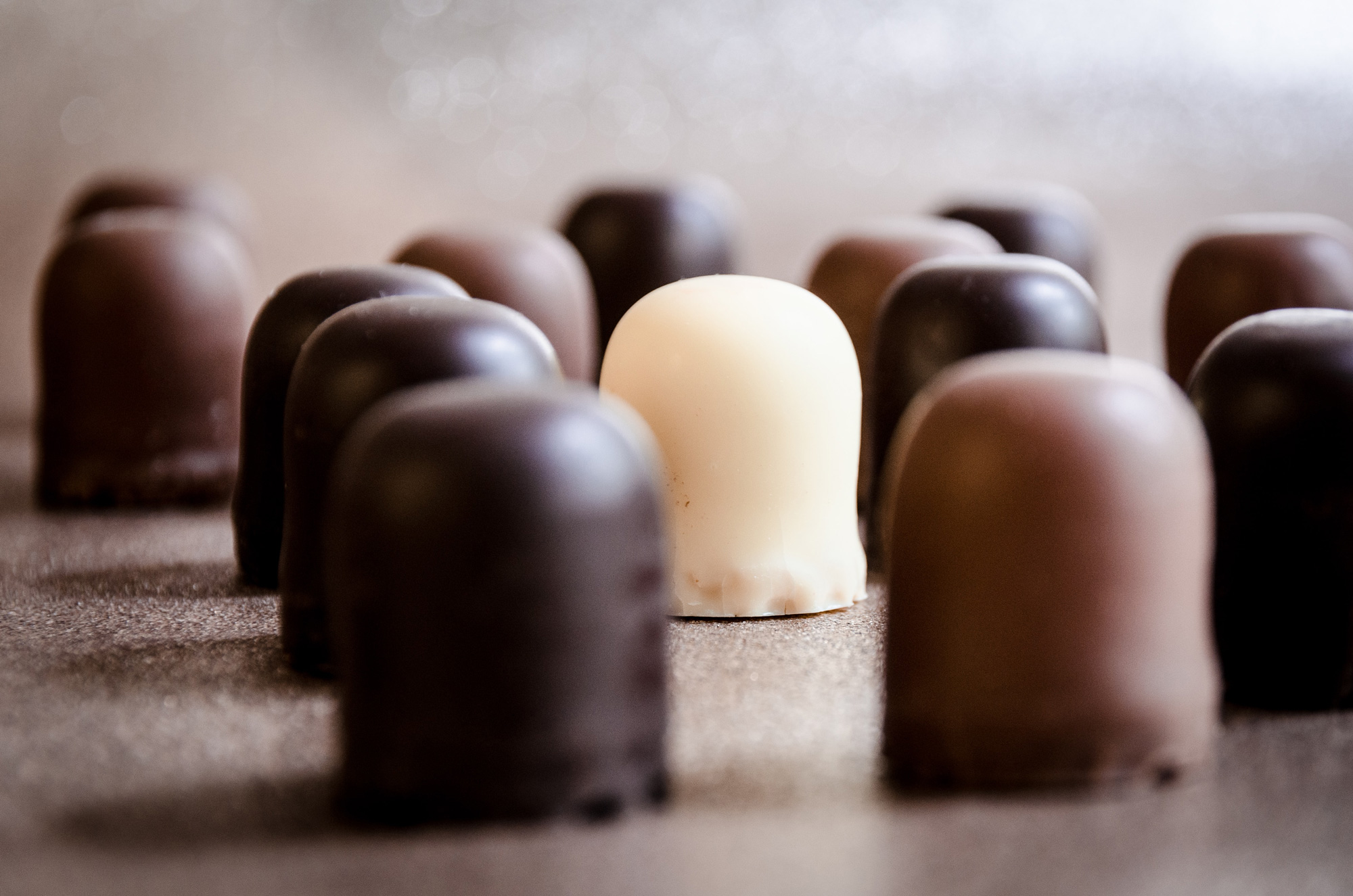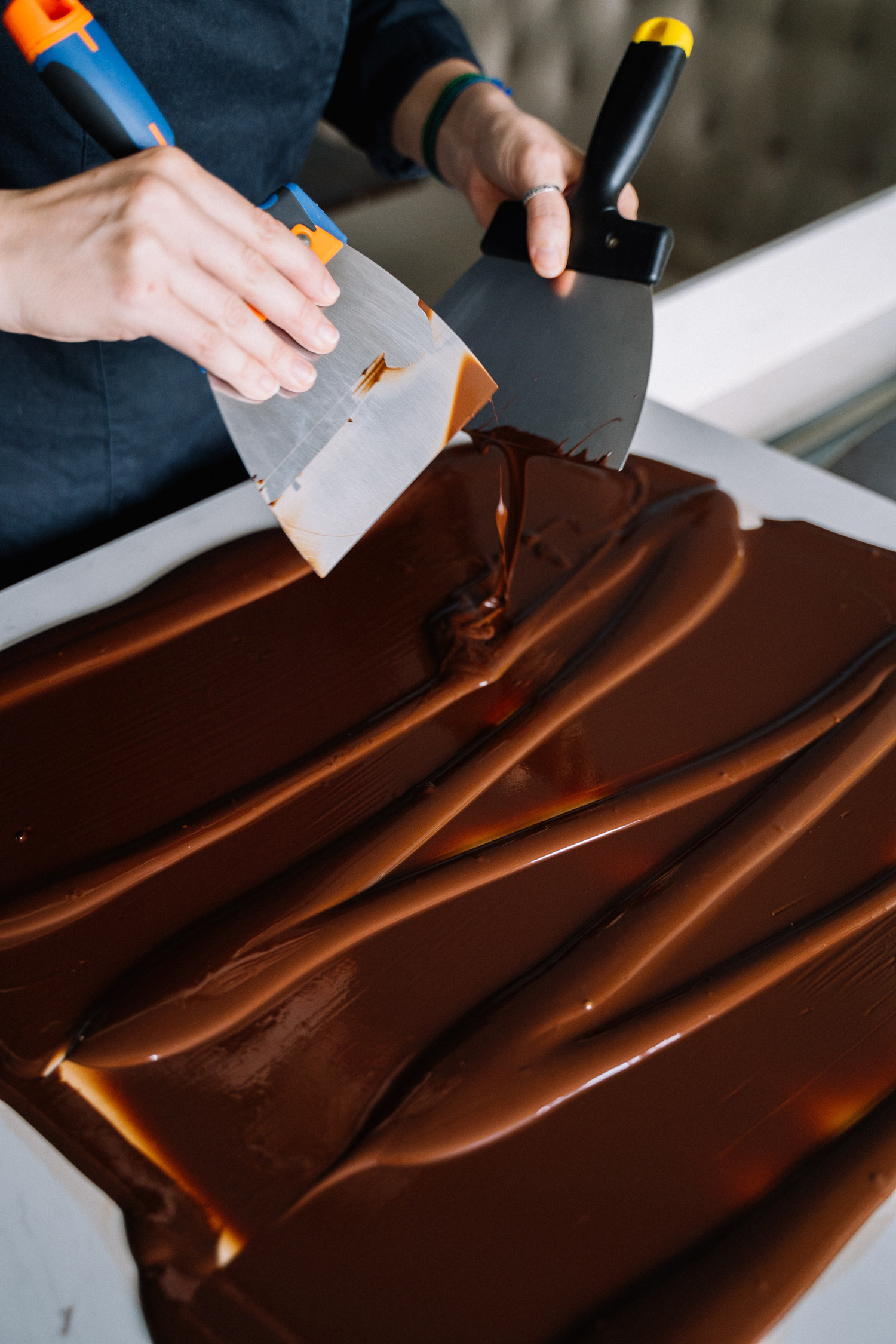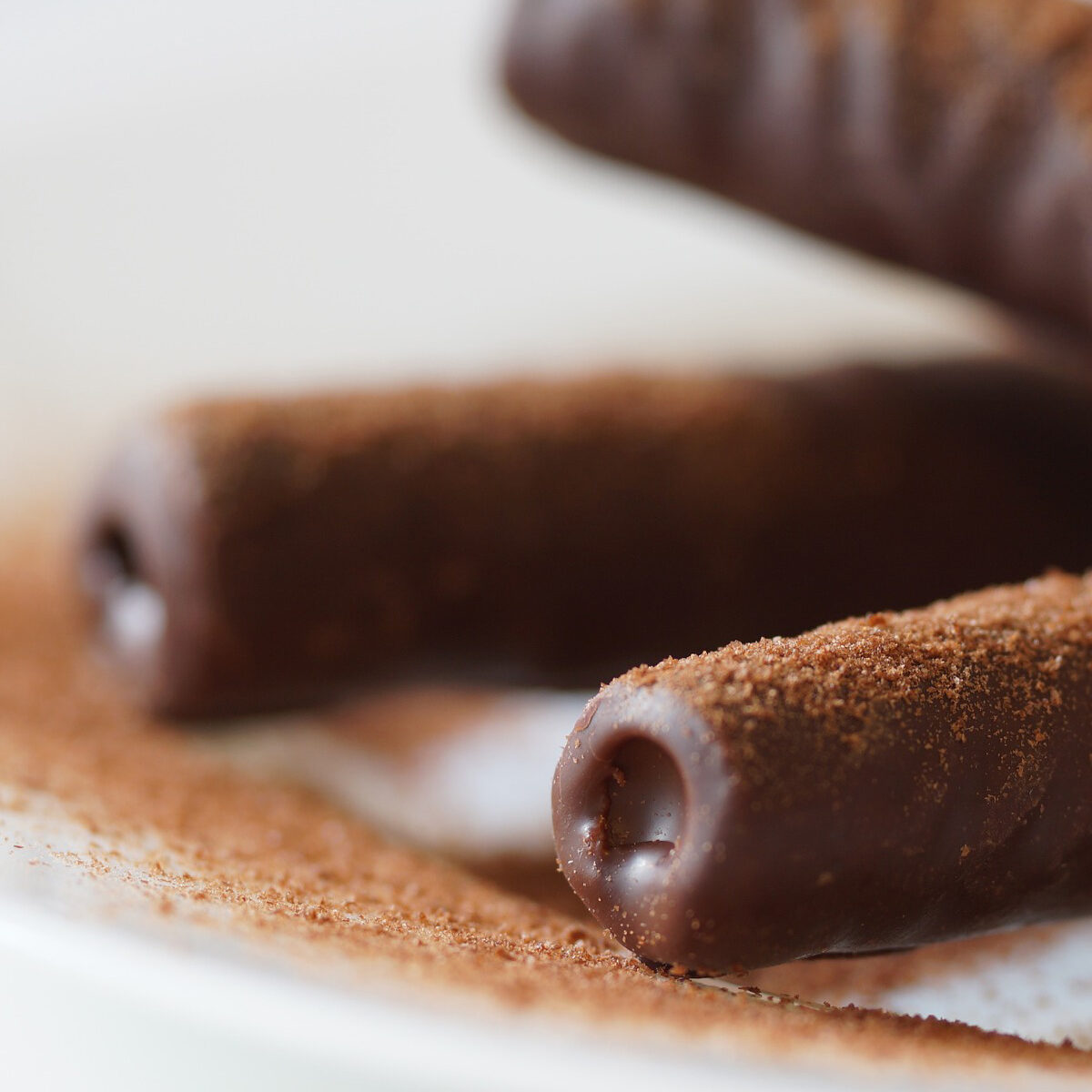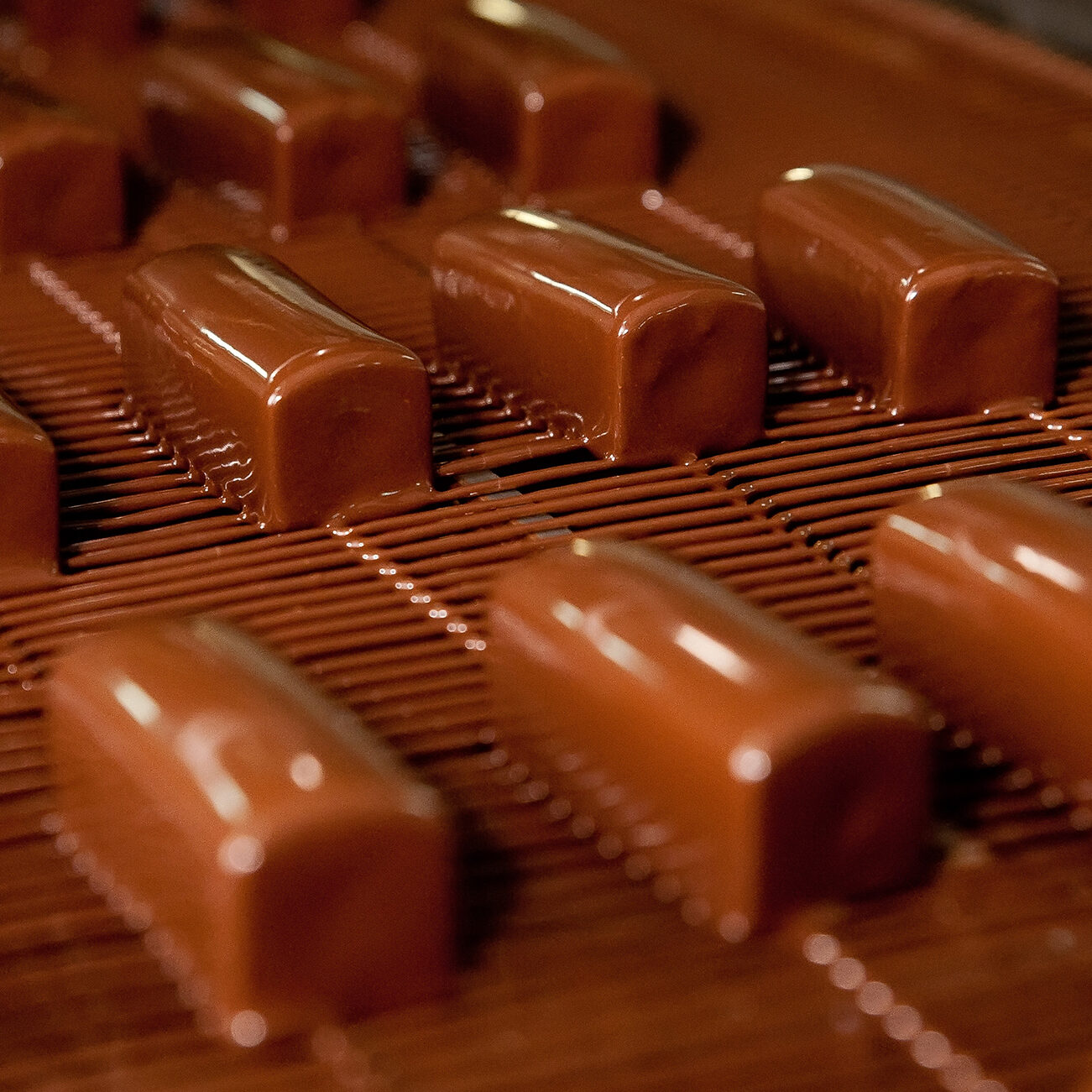

APPLICATION
Enrobing of a confectionery centre with chocolate
Enrobing is a specific term consisting of applying a thick layer of fluid chocolate on a core product and controlling its setting to achieve a uniform thickness. It is a ubiquitous process that requires mastering the chocolate preparation, depending on the composition: simply melting and regular tempering.


BASE
Core products
Any product can be enrobed with chocolate: a chocolate item, biscuit, or cereal bar.
RECIPE
Ingredients
The sole and only ingredient is “a” chocolate mass. It is a mix of:
- Cocoa mass, issued from fermented cocoa beans, composed of:
- Cocoa solids
- Cocoa butter
- Sugar
Other additions to change its taste, such as:
- Milk powder and fat
- Vegetable fats
- Emulsifiers
The definitions of the diverse types of chocolate are strictly regulated to prevent fraud.






RECIPE
Ingredients
The sole and only ingredient is “a” chocolate mass. It is a mix of:
- Cocoa mass, issued from fermented cocoa beans, composed of:
- Cocoa solids
- Cocoa butter
- Sugar
Other additions to change its taste, such as:
- Milk powder and fat
- Vegetable fats
- Emulsifiers
The definitions of the diverse types of chocolate are strictly regulated to prevent fraud.
PROCESS
How does it work?
Chocolate must generally undergo a process allowing it to set in a partly crystallized form. This lends its crispiness or snaps to the material.
This carefully controlled process called tempering runs as follows:
- Melting of the chocolate mass to obtain a fluid assembly;
- Cooling to crystallize partially the different fat types composing the cocoa butter;
- Reheating to melt back the most fragile fat crystals.
The chocolate mass is then composed of melted and crystallized parts in a given proportion, initiating the appropriate setting when cooled. After enrobing, the product is cooled progressively in a long tunnel. It is a continuous operation in the industry.
Step 1.
Tempering the chocolate mass.
Step 2.
Application by dribbling.
Step 3.
Removing the excess chocolate.
Step 4.
Cooling for proper crystalization.
PROCESS
Coating system
The enrobing machine is made of:
- A mesh conveyor
- A device receiving the melted chocolate and forming a falling curtain across the conveyor
- A recovery tray
The enrober is coupled with a tempering system that constantly recycles the chocolate and processes it through the above-described heating-cooling-heating cycles.
Temperature is carefully controlled throughout the whole tempering and enrobing processes.
Note that a similar enrobing process applies to a range of products other than sweet, with another substance similar to chocolate: fondant on bakery, emulsion on fruit skin for preservation, wax on cheese.
PROCESS
Coating system
The specific aspect of an enrober.
PRODUCT EVALUATION
How do you measure your success?
Key quality features
Chocolate is a demanding referee.


Surface aspect
Perfectly set chocolate is glossy.
Texture
The hard shell gives a crunchy feeling, termed “snap.”
Stability
Over time, the surface retains its gloss and shows no marble effect called “blooming.”
Key quality parameters
The process displays critical factors to control.


Chocolate
The proportion of cocoa butter (and occasionally vegetable fats) influences the tempering process.
Temperature
Temperature plays a vital role throughout the process, from tempering (crystallization), dribbling (viscosity), cooling, handling, and delivery.
Environment
Air moisture and temperature affect the result.
APPLICATION
Discover more applications

